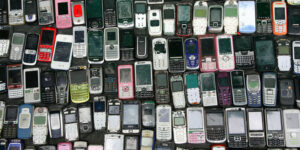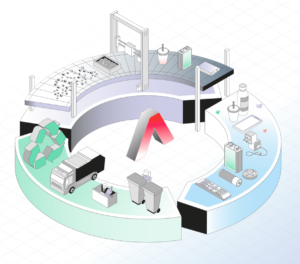In India, the iPhone has transcended its identity as just a smartphone—it’s become a symbol of status, exclusivity, and financial standing. With the launch of the iPhone 16, the obsession has only intensified. But before you rush to drop a lakh on the newest model, let’s break down some of the hidden costs associated with this purchase, using the iPhone 16 as an example. This isn’t just about the sticker price—there are multiple financial implications that can significantly impact your long-term wealth.
Fully Loaded Cost
The iPhone 16 starts at around ₹79,900, but this is just the surface cost. Add in essentials like a protective case, screen guard, and possibly AppleCare+, and you’re easily looking at an additional ₹10,000 to ₹20,000. Not to mention, the cost of new accessories like MagSafe chargers. Most people underestimate these add-ons, which are necessary to maximise the longevity and performance of the device.
Opportunity Cost
Let’s be clear—we’re not saying you shouldn’t buy an iPhone if that’s what you want. After all, it’s your money! However, before you swipe that card, ask yourself about the true utility of the phone. Is the iPhone 16 really the best option for you, or are there more affordable alternatives that offer similar or even better features?
For instance, many smartphones on the market come with equal or better battery life, cameras, and processing power, often at a much lower price point. If you choose a comparable phone that costs ₹40,000 instead of ₹1,00,000, the ₹60,000 you save could be invested elsewhere. This is where opportunity cost comes in—by making a more cost-effective choice, you could invest that extra ₹60,000 into a mutual fund or stock market, potentially growing your wealth over time.
Let’s break it down: if you invest that ₹60,000 with an annual return of 10%, it could grow to ₹96,000 in five years. That’s almost the cost of your next phone, paid for by your earlier smart decision! So, while buying an iPhone might feel like a win today, thinking about what that money could do for you in the future puts your financial goals into perspective.
In short, we’re not asking you to give up your dream phone but to consider how you can make your money work smarter for you in the long run.
Cost per Use
Let’s shift gears and look at the cost per day. Imagine you use your iPhone 16 every single day for the next three years, which is around 1,095 days. If you spend ₹1,00,000 on the phone, you’re essentially paying ₹91 per day to own it. Now, that doesn’t seem like a lot on a daily basis, right? But compare that to a phone that costs ₹40,000, which brings your daily cost down to ₹36 per day.
The question is, does the iPhone provide three times the value or utility compared to a cheaper, high-performing phone? Probably not. So, while you’re getting the prestige of owning the latest iPhone, you might be overpaying for the actual functionality you need on a day-to-day basis.
Making these small adjustments can free up cash for other life-enhancing investments, like a vacation or an emergency fund, which offer better returns on your money in the long run. The daily cost of using your device might seem insignificant, but over time, it adds up!
Residual Cost
Apple does retain good resale value compared to other phones, but you’re still losing a significant portion of your investment. After a year or two, the iPhone’s resale value typically drops by 30-40%. For instance, an iPhone 16 bought for ₹1 lakh might fetch ₹60,000 after a year. So, while resale value softens the blow, it’s still a loss.
Social Cost
This is the invisible price many fail to account for—the social pressure. In India, owning an iPhone is often seen as a status symbol, reinforcing a mindset of consumption over financial prudence. The “Fear of Missing Out” (FOMO) is heightened by social media, which can lead people into debt just to keep up with their peers. According to recent reports, many buyers take advantage of installment plans, making it “easier” to buy an iPhone, but the long-term cost includes interest payments and financial strain.
The Rich vs. Poor Mindset
The obsession with luxury goods like the iPhone highlights a significant difference between rich and poor mindsets when it comes to spending. A rich mindset views money as a tool to create wealth, focusing on investments, experiences, and value. In contrast, a poor mindset often equates spending with acquiring material things to project an image of wealth.
The wealthy are more likely to see an iPhone as a tool for productivity, enhancing their business or personal efficiency. On the other hand, the poor mindset focuses on the social validation the phone brings, without fully accounting for the financial implications. This is where many fall into the “status trap”—spending money to appear rich, while actually undermining long-term economic stability.
The Bigger Picture: Wealth vs. Things
Ultimately, true wealth is about freedom—freedom to make choices that enhance your life experiences rather than accumulating things. Whether it’s the latest iPhone or any other luxury item, the decision to buy should be informed by an understanding of the broader financial implications. Is this purchase genuinely going to enhance your life or just add another fancy item to your collection?
In 2024, the trend is shifting towards mindful spending—people are becoming more conscious of the impact of their purchases on both their wallet and the planet. So, before you click “buy” on that iPhone 16, ask yourself: is it a need or a want?










